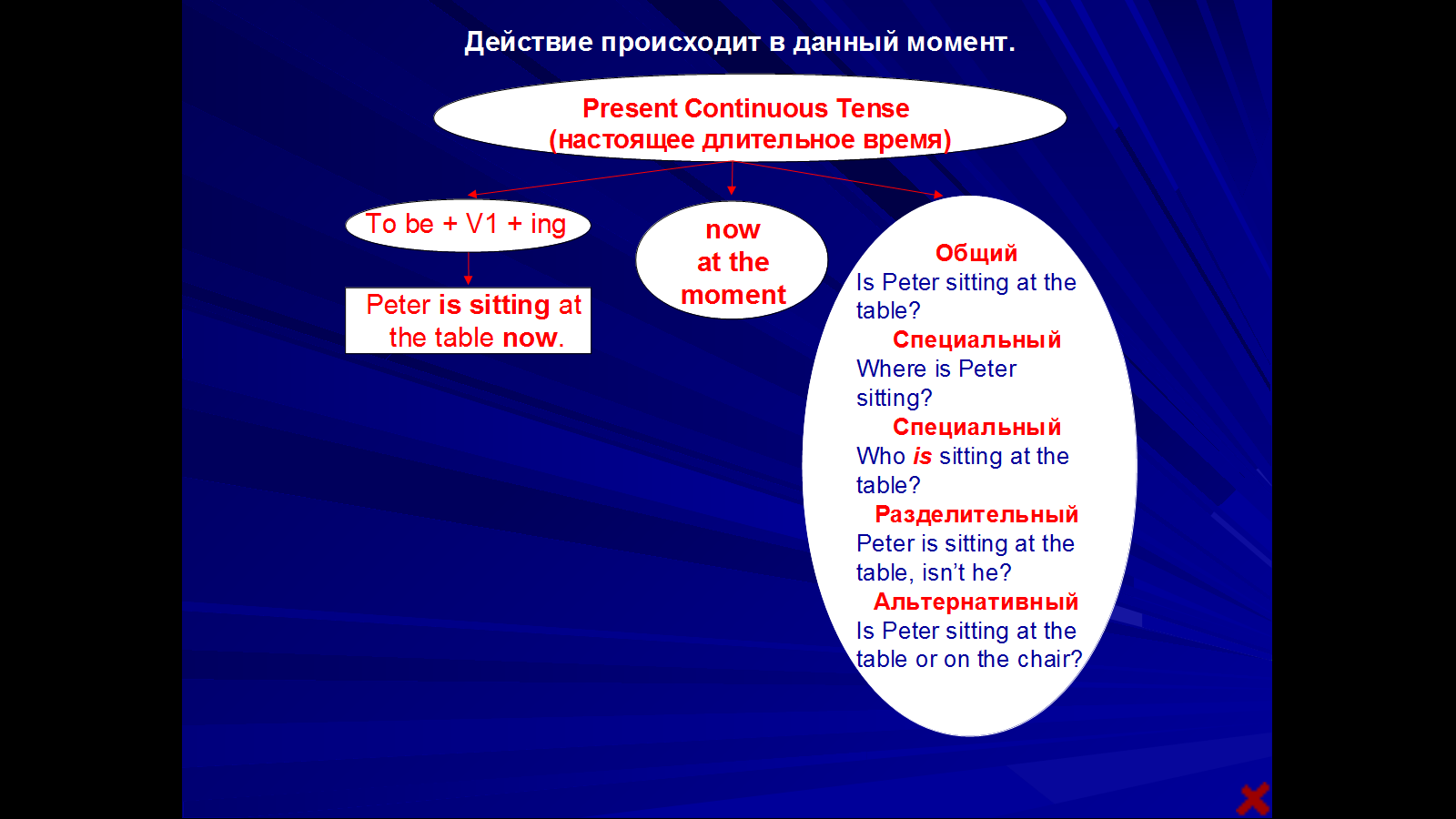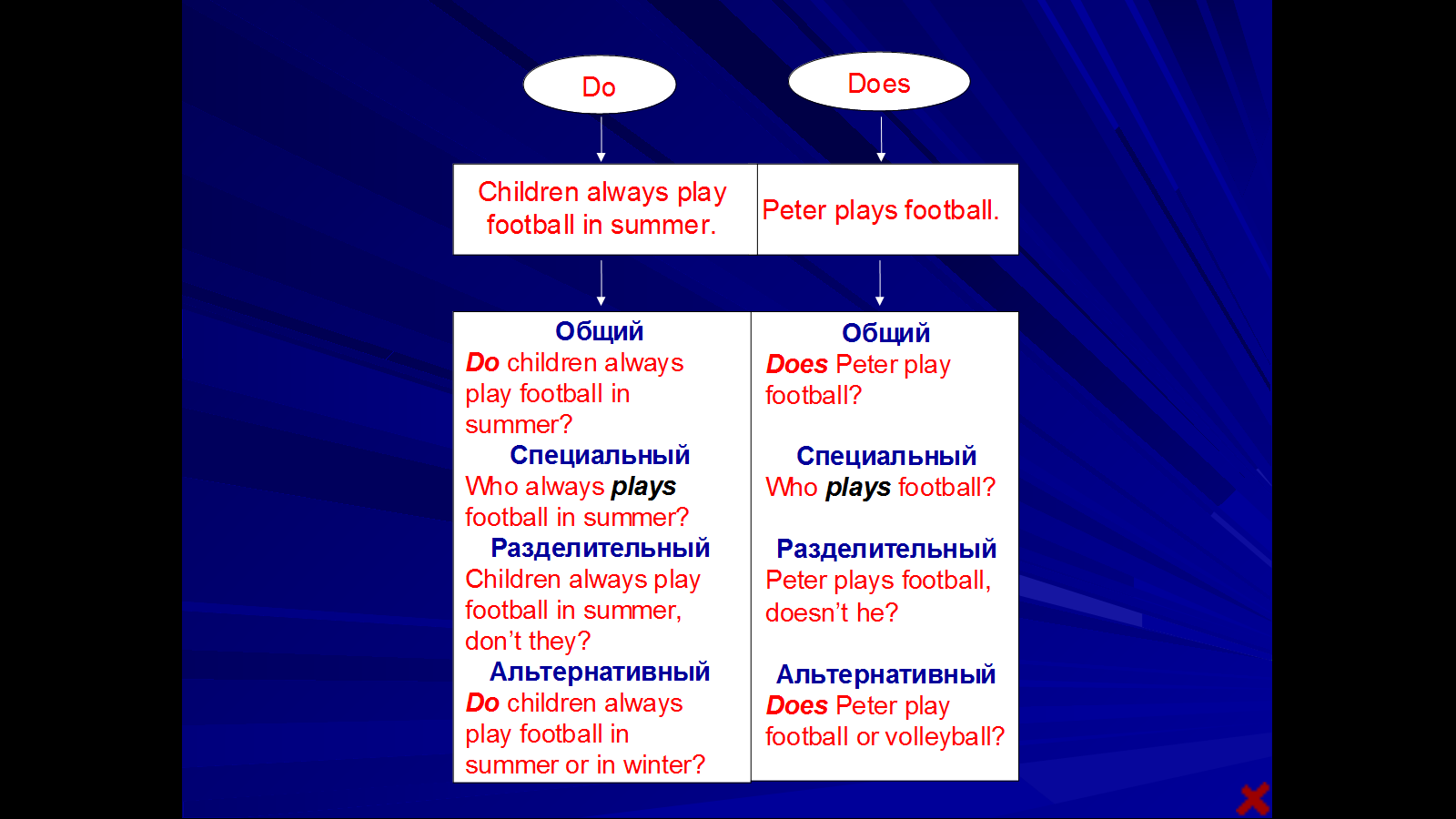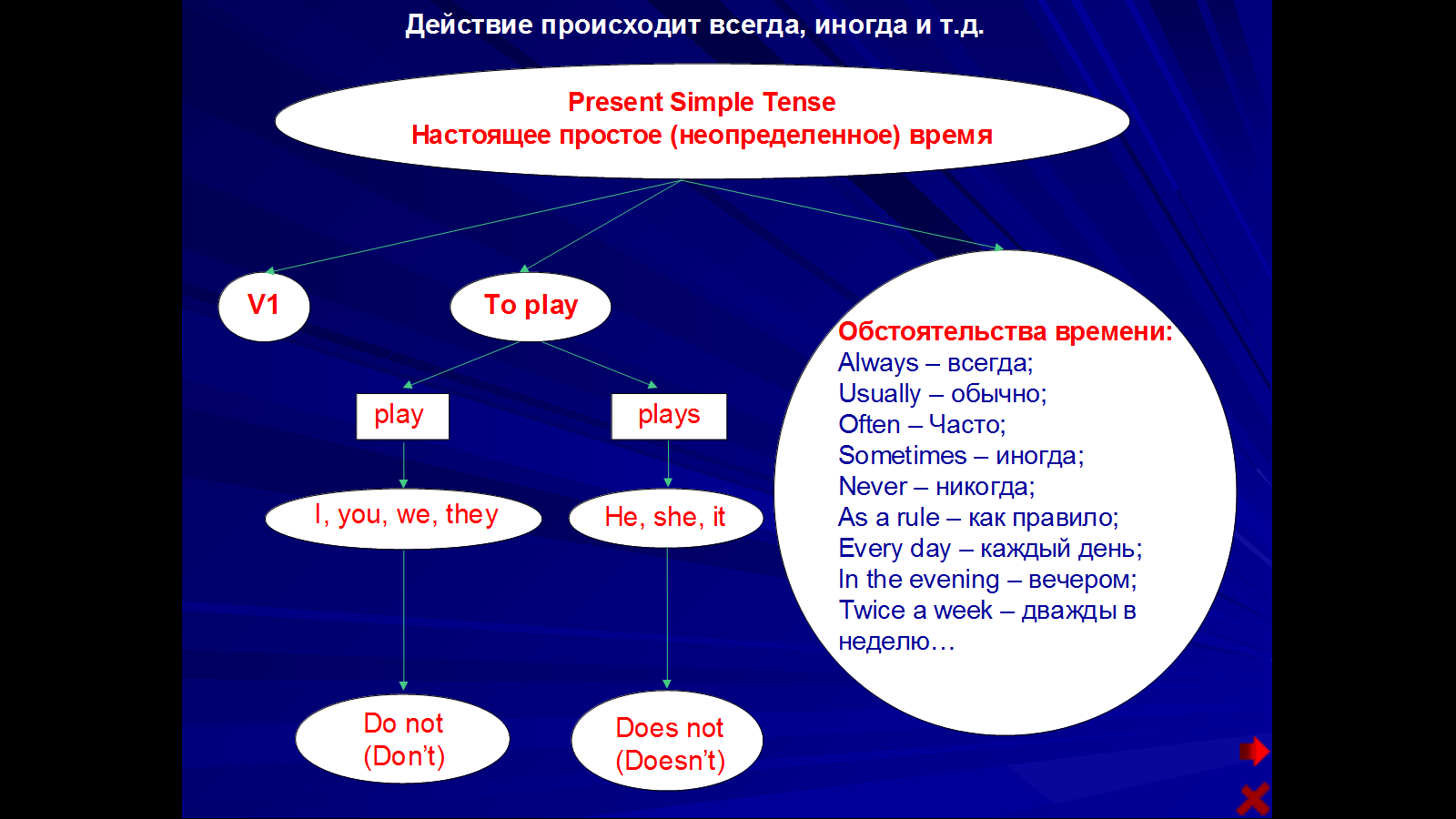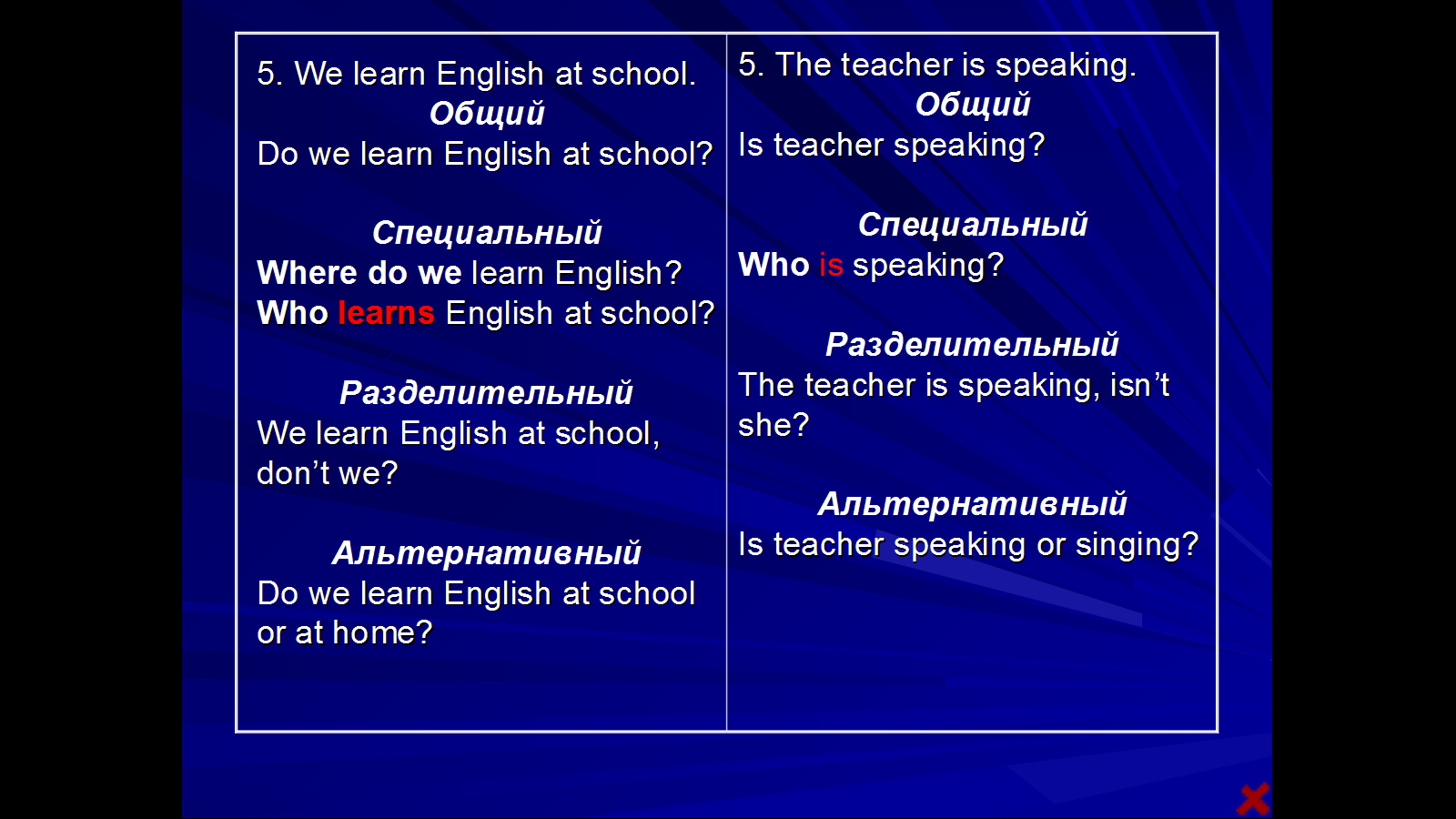Файл: Урок в 7 классе по теме Настоящее длительное и настоящее простое времена грамматический практикум.doc
ВУЗ: Не указан
Категория: Не указан
Дисциплина: Не указана
Добавлен: 05.05.2024
Просмотров: 14
Скачиваний: 0
ВНИМАНИЕ! Если данный файл нарушает Ваши авторские права, то обязательно сообщите нам.
Урок в 7 классе по теме «Настоящее длительное и настоящее простое времена — грамматический практикум»
Цель урока: освоить использование в разных видах речевой деятельности настоящего длительного времени и настоящего простого времени.
Задачи урока:
1) Развитие навыков распознавания и различения значений глаголов в Present Simple и Present Continuous (повторение с расширением знаний);
2) Развитие навыков употребления в речи глаголов в Present Simple и Present Continuous;
3) Развитие умений работать в парах;
4) Развитие памяти, процессов мышления: анализа; внимания.
Тип урока: грамматический практикум с использованием фронтальной, парной и индивидуальной работы учащихся.
Образовательные технологии:
-
Информационно-коммуникативные — позволяют лучше осмыслить учебную информацию, формируют устойчивую мотивациюучебной деятельности; -
Приемы ТРКМ — позволяют анализировтаь ситуацию, делать выводы и предлагать свои решения.
Наглядность и ТСО:
1) ПК, мультимедийная установка;
2) Презентация (кластеры);
3) Раздаточный материал (ксерокопии упражнений).
План урока:
Начало урока:
1. Представление темы и цели урока.
2. Речевая разминка.
Основная часть урока:
3. Введение и отработка настоящего продолженного времени (Present Continuous).
4. Введение и отработка настоящего простого времени (Present Simple).
5. Применение Present Simple и Present Continuous.
Окончание урока.
6. Предъявление домашнего задания и комментарии по его выполнению.
7. Подведение итогов.
Ход урока:
| Деятельность учителя | Деятельность учащихся | Примечания |
| 1. Представление темы и цели урока. Hello, boys and girls. Nice to see you. Please, take your places. What date is it today? What day of the week is it today? Today we are going to revise grammar. 2. Речевая разминка. Right you are. Will you, please, answer some questions. Do you usually get up early? Who usually prepares breakfast in your family? Are you having an English lesson now? Is your friend sleeping or studying at the moment? How many lessons do you usually have? OK. Thanks for your answers. I think you have noticed that I've used Present tenses in my questions. What Present tenses have I used? You are absolutely right. 3. Введение и отработка настоящего продолженного времени (Present Continuous). Will you, please, look at the board. Let's discuss the Present Continuous Tense. When is this tense used? Good. Look at the cluster and say which form of the verb is used. Which adverbs help us understand that the Present Continuous should be used? Correct. And now pay attention to the formation of the questions in Present Continuous. Well, let's practice a bit.. Great! 4. Введение и отработка настоящего простого времени (Present Simple). It's high time to discuss Present Simple. look at the board. What actions does Present Simple express? You are completely right. Look at the cluster and say what form of the verb is used. Very nice! And say, please, what adverbs of frequency are used in Present Simple. Please, pay attention to the questions in Present Simple. Let's practice asking and answering questions in Present Simple. Student1, will you come to me? And you ask him questions about his daily routine. Let's do one exercise It was well-done. 5. Применение Present Simple и Present Continuous. Now let's compare the use of these two tenses. Look at the clusters. Will you comment the tables, please. Student1 will speak about Present Simple, Student2 - about Present Continuous. Comment one by one. And look at the exercise in the hand-outs you've received. Student3 comes to the board, do the exercise. The task is to choose the given answers. Well, let's proceed to some more exercises. Do task 28a. Let's check it up. 6. Предъявление домашнего задания и комментарии по его выполнению. You've worked excellently today. Your home task is the following. In you student's books there is information about Present Simple and Continuous Tenses. It is in Grammar Reference, pages 1 and 2. Look through the information, study thoroughly the information about stative verbs. We haven't mentioned them at our lesson today, we are going to discuss them next time. Write out the stative verbs into your copy-books. And besides, do Ex. 78 on p. 45 and Ex.81 on p. 46 in "Round Up". 7. Подведение итогов. Thanks for your work. Your marks are .... The lesson is over. See you tomorrow. | I usually get up at 7 o'clock. My mother usually prepares breakfast in our family. Yes, we are We are having an English lesson now. My friend is studying at the moment. Usually I have 6 lessons. You have used the Present Simple и Present Continuous tenses. It's used when an action is happening at the moment of speaking or when we speak about future plans. It expresses present states and facts. Besides, it's used when we speak about daily routine and habits. | В качестве речевой зарядки учащиеся отвечают на вопросы во временах Present Simple и Present Continuous. Информация вводится посредством презентации  Один из учащихся читает вслух предложение и вопросы к нему. Приложение 1. Учащиеся по цепочке читают предложения из упражнения (необходимо поставить глагол из скобок в Present Continuous).    Учащиеся самостоятельно читают вопросы.  Один ученик выходит к доске, ему остальные задают вопросы о его распорядке дня Упражнение выполняется по цепочке. Учащиеся получают раздаточный материал. Один из учащихся выходит и выполняет упражнение на интерактивной доске, все остальные на местах. (Приложение 3). Затем проверяем вместе. Сначала учащиеся выполняют упражнение самостоятельно, затем проверяем. (резервное упражнение 29а). |
